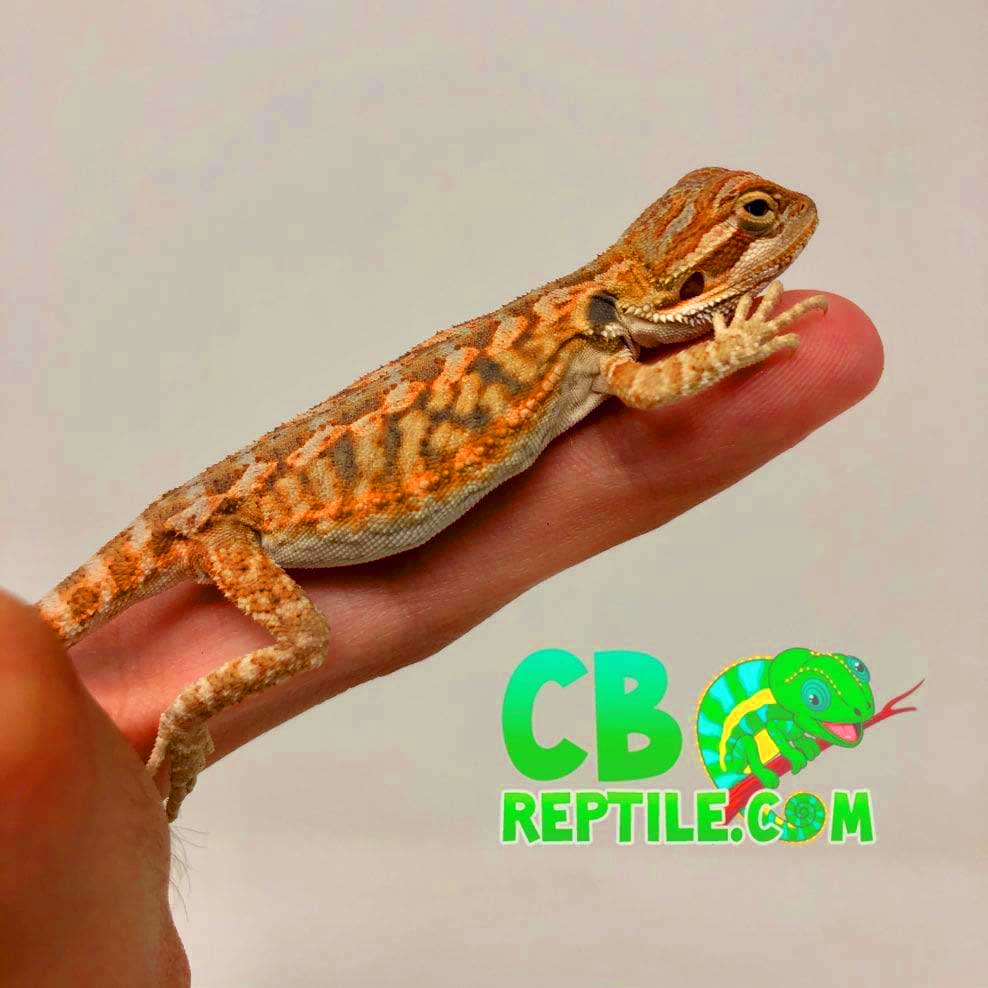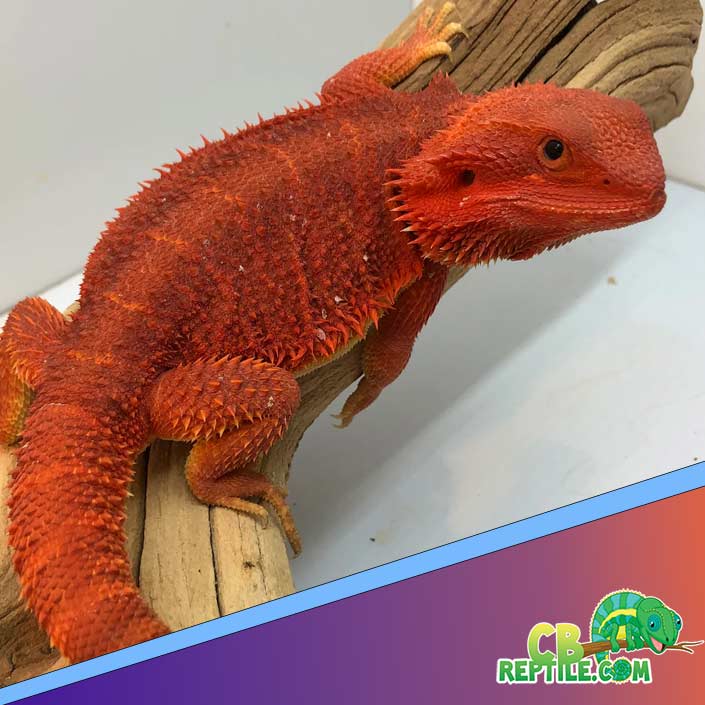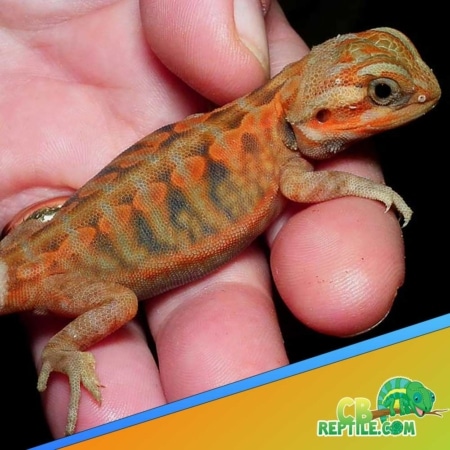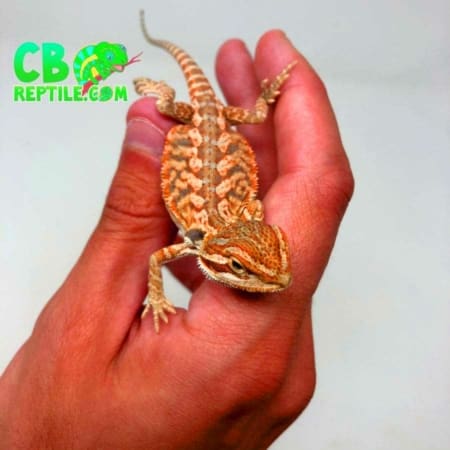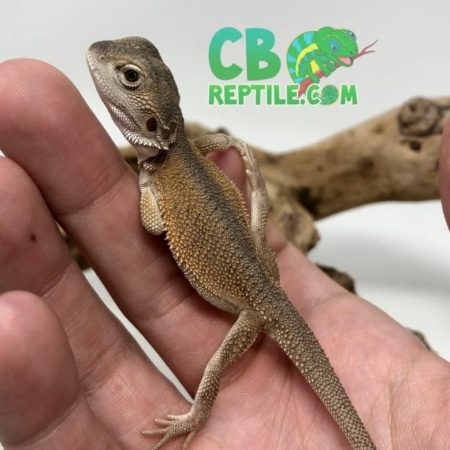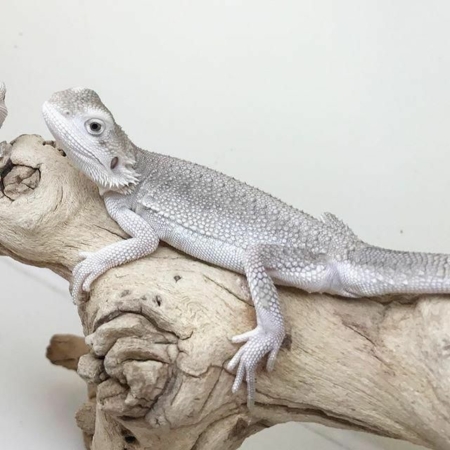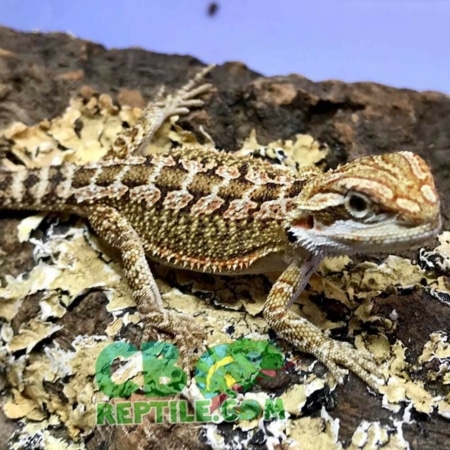Baby Inferno Bearded Dragon Morph Guide & Color Progression
Baby Inferno Bearded Dragon Morph Guide & Color Progression is a topic that matters to serious keepers who want to raise strong, colorful juveniles from the very beginning. While basic care information for babies is widely available, morph-specific tips, growth insights, and breeder-level strategies are harder to find in one place. This page brings those details together in a structured, practical format that you can reference as you set up your enclosure, plan your feeding schedule, and evaluate how your dragon is developing from week to week.
Working with high quality bloodlines and captive-bred stock gives you the best possible starting point. When a baby comes from robust parents that have proven themselves in captive conditions, you are already several steps ahead. Instead of troubleshooting preventable issues from day one, you can focus on fine-tuning environment and diet. That is why so many experienced keepers prefer to buy directly from operations that specialize in dragons and maintain long-term breeding projects.
If you are still in the research phase and have not picked out your animal yet, one of the easiest ways to start on the right foot is to select a well-started juvenile from a curated list. Browsing a reputable baby bearded dragon for sale collection lets you compare morphs, bloodlines, and price points while knowing that each baby has been eating, basking, and shedding properly before it ever leaves the facility.
Morph-Specific Traits You Will Notice in Babies
Even as hatchlings, different morphs show unique visual signatures. Some have softer pastel tones that bloom with each shed, while others display bold, saturated color from the first week of life. Patternless lines may look simple at a glance but become striking under bright lights, and high-red or inferno types often reveal subtle layering of orange, crimson, and rust as they mature. By watching carefully and taking photos every few weeks, you can track how your baby’s pattern and saturation evolve over time.
Certain morphs also seem to have slightly different tendencies in terms of behavior. Some lines are famously laid-back, while others tend to be more alert and reactive when young. None of these patterns are absolute, but they are worth noting as you compare animals from different clutches. Paying attention to both looks and temperament helps you choose a dragon that fits your lifestyle, whether you prefer a super inquisitive animal or a more relaxed display lizard.
Enclosure Layout for Fast-Growing Juveniles
Morph-specific babies still share the same core environmental needs as any other central bearded dragon. A thoughtfully designed enclosure provides vertical and horizontal options so the animal can self-regulate temperature and light exposure. Place a primary basking ledge beneath your heat and UVB sources, then add secondary branches or shelves at descending heights. This layout allows the dragon to fine-tune comfort level without being forced into a single spot.
Visual barriers such as cork flats, rocks, and plants (real or artificial) give babies a sense of security. They break up sightlines so the dragon does not feel exposed from every angle. When a baby knows it can retreat behind a branch or under a ledge, it actually spends more time in the open, basking and exploring, because it feels in control of its options rather than trapped in a bare box.
Lighting, UVB & Color Expression
Strong, appropriate UVB not only protects bones and immune function but also plays a role in how well color expresses over time. Underpowered or low-quality lighting can leave babies looking dull, even if their genetics are excellent. Using a high-output T5 HO UVB tube, mounted correctly and replaced on schedule, helps each morph live up to its potential. Pair this with a bright, natural-spectrum basking bulb rather than dim, colored lights that distort the way the dragon and its surroundings appear.
Photograph your baby under the same lighting conditions periodically to assess real changes in its appearance. Even small improvements in UVB placement or basking temperature can make noticeable differences in how vivid the scales look. Over many months, subtle adjustments add up to dramatic improvements in overall presentation.
Feeding Strategies for Morph-Specific Goals
Most morphs can follow the same broad dietary blueprint, but you may tweak feeding strategies based on your goals. For example, keepers focusing on future breeding prospects often aim for steady, not explosive, growth to avoid putting excess strain on developing joints. Display-focused keepers may introduce a wider variety of feeders and occasional color-enhancing foods like squash and bell peppers, not because they magically change genetics, but because they support broad nutritional coverage and overall vitality.
Regardless of morph, babies thrive on a foundation of properly sized dubia roaches, crickets, black soldier fly larvae, silkworms, and the occasional hornworm or treat insect. Layer in daily salads featuring safe greens, and dust feeders with a quality calcium and multivitamin schedule that has been vetted by experienced dragon keepers or reptile veterinarians. The combination of good genetics, consistent UVB, and smart nutrition is what produces robust, vividly colored adults.
Breeder-Level Observations & Record Keeping
One of the differences between casual pet ownership and breeder-level husbandry is the amount of tracking involved. Breeders routinely log hatch dates, shed dates, growth measurements, diet changes, and any observed quirks in behavior or health. You do not have to maintain professional-level spreadsheets to benefit from this mindset, but keeping basic notes on your baby’s timeline pays off. It allows you to spot patterns early, catch plateaus in growth, and recognize how tweaks to environment or feeding show up in your dragon’s daily behavior.
Photos are especially valuable. Many keepers take quick snapshots after major sheds, weight milestones, or enclosure upgrades. Over time, this becomes a visual history of your dragon’s life and helps you appreciate the transformation from tiny hatchling to impressive adult. If you ever decide to work with morph-specific projects or share your experiences with other keepers, these records become even more useful.
Long-Term Planning for Morph-Specific Babies
Regardless of which morph or subtopic brought you to this page, the long-term plan for baby dragons follows the same arc: provide an excellent start, remain consistent with care, and keep learning as you go. New research, better lighting technology, and evolving best practices continue to refine how we keep these lizards. Staying plugged into reputable information sources and community discussions keeps your approach current and gives your baby the best possible quality of life.
Below you will find a curated product feed featuring related dragons and morphs that pair well visually and genetically with the themes discussed on this page. Use it as inspiration for future additions to your reptile room or as a reference point when comparing different looks and lineages.
Keepers who work with baby bearded dragons consistently find that attention to detail in lighting, diet, record keeping, and morph selection has a compounding effect on long-term health, color, and overall quality of life for their animals. Keepers who work with baby bearded dragons consistently find that attention to detail in lighting, diet, record keeping, and morph selection has a compounding effect on long-term health, color, and overall quality of life for their animals. Keepers who work with baby bearded dragons consistently find that attention to detail in lighting, diet, record keeping, and morph selection has a compounding effect on long-term health, color, and overall quality of life for their animals. Keepers who work with baby bearded dragons consistently find that attention to detail in lighting, diet, record keeping, and morph selection has a compounding effect on long-term health, color, and overall quality of life for their animals. Keepers who work with baby bearded dragons consistently find that attention to detail in lighting, diet, record keeping, and morph selection has a compounding effect on long-term health, color, and overall quality of life for their animals. Keepers who work with baby bearded dragons consistently find that attention to detail in lighting, diet, record keeping, and morph selection has a compounding effect on long-term health, color, and overall quality of life for their animals. Keepers who work with baby bearded dragons consistently find that attention to detail in lighting, diet, record keeping, and morph selection has a compounding effect on long-term health, color, and overall quality of life for their animals. Keepers who work with baby bearded dragons consistently find that attention to detail in lighting, diet, record keeping, and morph selection has a compounding effect on long-term health, color, and overall quality of life for their animals. Keepers who work with baby bearded dragons consistently find that attention to detail in lighting, diet, record keeping, and morph selection has a compounding effect on long-term health, color, and overall quality of life for their animals. Keepers who work with baby bearded dragons consistently find that attention to detail in lighting, diet, record keeping, and morph selection has a compounding effect on long-term health, color, and overall quality of life for their animals. Keepers who work with baby bearded dragons consistently find that attention to detail in lighting, diet, record keeping, and morph selection has a compounding effect on long-term health, color, and overall quality of life for their animals. Keepers who work with baby bearded dragons consistently find that attention to detail in lighting, diet, record keeping, and morph selection has a compounding effect on long-term health, color, and overall quality of life for their animals. Keepers who work with baby bearded dragons consistently find that attention to detail in lighting, diet, record keeping, and morph selection has a compounding effect on long-term health, color, and overall quality of life for their animals. Keepers who work with baby bearded dragons consistently find that attention to detail in lighting, diet, record keeping, and morph selection has a compounding effect on long-term health, color, and overall quality of life for their animals. Keepers who work with baby bearded dragons consistently find that attention to detail in lighting, diet, record keeping, and morph selection has a compounding effect on long-term health, color, and overall quality of life for their animals. Keepers who work with baby bearded dragons consistently find that attention to detail in lighting, diet, record keeping, and morph selection has a compounding effect on long-term health, color, and overall quality of life for their animals. Keepers who work with baby bearded dragons consistently find that attention to detail in lighting, diet, record keeping, and morph selection has a compounding effect on long-term health, color, and overall quality of life for their animals. Keepers who work with baby bearded dragons consistently find that attention to detail in lighting, diet, record keeping, and morph selection has a compounding effect on long-term health, color, and overall quality of life for their animals. Keepers who work with baby bearded dragons consistently find that attention to detail in lighting, diet, record keeping, and morph selection has a compounding effect on long-term health, color, and overall quality of life for their animals. Keepers who work with baby bearded dragons consistently find that attention to detail in lighting, diet, record keeping, and morph selection has a compounding effect on long-term health, color, and overall quality of life for their animals. Keepers who work with baby bearded dragons consistently find that attention to detail in lighting, diet, record keeping, and morph selection has a compounding effect on long-term health, color, and overall quality of life for their animals. Keepers who work with baby bearded dragons consistently find that attention to detail in lighting, diet, record keeping, and morph selection has a compounding effect on long-term health, color, and overall quality of life for their animals. Keepers who work with baby bearded dragons consistently find that attention to detail in lighting, diet, record keeping, and morph selection has a compounding effect on long-term health, color, and overall quality of life for their animals. Keepers who work with baby bearded dragons consistently find that attention to detail in lighting, diet, record keeping, and morph selection has a compounding effect on long-term health, color, and overall quality of life for their animals. Keepers who work with baby bearded dragons consistently find that attention to detail in lighting, diet, record keeping, and morph selection has a compounding effect on long-term health, color, and overall quality of life for their animals. Keepers who work with baby bearded dragons consistently find that attention to detail in lighting, diet, record keeping, and morph selection has a compounding effect on long-term health, color, and overall quality of life for their animals. Keepers who work with baby bearded dragons consistently find that attention to detail in lighting, diet, record keeping, and morph selection has a compounding effect on long-term health, color, and overall quality of life for their animals. Keepers who work with baby bearded dragons consistently find that attention to detail in lighting, diet, record keeping, and morph selection has a compounding effect on long-term health, color, and overall quality of life for their animals. Keepers who work with baby bearded dragons consistently find that attention to detail in lighting, diet, record keeping, and morph selection has a compounding effect on long-term health, color, and overall quality of life for their animals. Keepers who work with baby bearded dragons consistently find that attention to detail in lighting, diet, record keeping, and morph selection has a compounding effect on long-term health, color, and overall quality of life for their animals. Keepers who work with baby bearded dragons consistently find that attention to detail in lighting, diet, record keeping, and morph selection has a compounding effect on long-term health, color, and overall quality of life for their animals. Keepers who work with baby bearded dragons consistently find that attention to detail in lighting, diet, record keeping, and morph selection has a compounding effect on long-term health, color, and overall quality of life for their animals. Keepers who work with baby bearded dragons consistently find that attention to detail in lighting, diet, record keeping, and morph selection has a compounding effect on long-term health, color, and overall quality of life for their animals. Keepers who work with baby bearded dragons consistently find that attention to detail in lighting, diet, record keeping, and morph selection has a compounding effect on long-term health, color, and overall quality of life for their animals. Keepers who work with baby bearded dragons consistently find that attention to detail in lighting, diet, record keeping, and morph selection has a compounding effect on long-term health, color, and overall quality of life for their animals. Keepers who work with baby bearded dragons consistently find that attention to detail in lighting, diet, record keeping, and morph selection has a compounding effect on long-term health, color, and overall quality of life for their animals. Keepers who work with baby bearded dragons consistently find that attention to detail in lighting, diet, record keeping, and morph selection has a compounding effect on long-term health, color, and overall quality of life for their animals. Keepers who work with baby bearded dragons consistently find that attention to detail in lighting, diet, record keeping, and morph selection has a compounding effect on long-term health, color, and overall quality of life for their animals. Keepers who work with baby bearded dragons consistently find that attention to detail in lighting, diet, record keeping, and morph selection has a compounding effect on long-term health, color, and overall quality of life for their animals. Keepers who work with baby bearded dragons consistently find that attention to detail in lighting, diet, record keeping, and morph selection has a compounding effect on long-term health, color, and overall quality of life for their animals. Keepers who work with baby bearded dragons consistently find that attention to detail in lighting, diet, record keeping, and morph selection has a compounding effect on long-term health, color, and overall quality of life for their animals. Keepers who work with baby bearded dragons consistently find that attention to detail in lighting, diet, record keeping, and morph selection has a compounding effect on long-term health, color, and overall quality of life for their animals. Keepers who work with baby bearded dragons consistently find that attention to detail in lighting, diet, record keeping, and morph selection has a compounding effect on long-term health, color, and overall quality of life for their animals. Keepers who work with baby bearded dragons consistently find that attention to detail in lighting, diet, record keeping, and morph selection has a compounding effect on long-term health, color, and overall quality of life for their animals. Keepers who work with baby bearded dragons consistently find that attention to detail in lighting, diet, record keeping, and morph selection has a compounding effect on long-term health, color, and overall quality of life for their animals. Keepers who work with baby bearded dragons consistently find that attention to detail in lighting, diet, record keeping, and morph selection has a compounding effect on long-term health, color, and overall quality of life for their animals. Keepers who work with baby bearded dragons consistently find that attention to detail in lighting, diet, record keeping, and morph selection has a compounding effect on long-term health, color, and overall quality of life for their animals. Keepers who work with baby bearded dragons consistently find that attention to detail in lighting, diet, record keeping, and morph selection has a compounding effect on long-term health, color, and overall quality of life for their animals. Keepers who work with baby bearded dragons consistently find that attention to detail in lighting, diet, record keeping, and morph selection has a compounding effect on long-term health, color, and overall quality of life for their animals. Keepers who work with baby bearded dragons consistently find that attention to detail in lighting, diet, record keeping, and morph selection has a compounding effect on long-term health, color, and overall quality of life for their animals. Keepers who work with baby bearded dragons consistently find that attention to detail in lighting, diet, record keeping, and morph selection has a compounding effect on long-term health, color, and overall quality of life for their animals. Keepers who work with baby bearded dragons consistently find that attention to detail in lighting, diet, record keeping, and morph selection has a compounding effect on long-term health, color, and overall quality of life for their animals. Keepers who work with baby bearded dragons consistently find that attention to detail in lighting, diet, record keeping, and morph selection has a compounding effect on long-term health, color, and overall quality of life for their animals. Keepers who work with baby bearded dragons consistently find that attention to detail in lighting, diet, record keeping, and morph selection has a compounding effect on long-term health, color, and overall quality of life for their animals. Keepers who work with baby bearded dragons consistently find that attention to detail in lighting, diet, record keeping, and morph selection has a compounding effect on long-term health, color, and overall quality of life for their animals. Keepers who work with baby bearded dragons consistently find that attention to detail in lighting, diet, record keeping, and morph selection has a compounding effect on long-term health, color, and overall quality of life for their animals. Keepers who work with baby bearded dragons consistently find that attention to detail in lighting, diet, record keeping, and morph selection has a compounding effect on long-term health, color, and overall quality of life for their animals. Keepers who work with baby bearded dragons consistently find that attention to detail in lighting, diet, record keeping, and morph selection has a compounding effect on long-term health, color, and overall quality of life for their animals. Keepers who work with baby bearded dragons consistently find that attention to detail in lighting, diet, record keeping, and morph selection has a compounding effect on long-term health, color, and overall quality of life for their animals. Keepers who work with baby bearded dragons consistently find that attention to detail in lighting, diet, record keeping, and morph selection has a compounding effect on long-term health, color, and overall quality of life for their animals.


